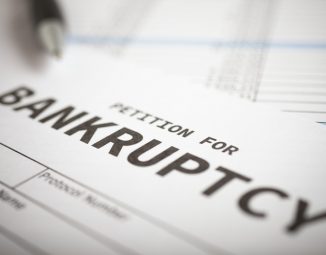THE BIG PROBLEM WITH SMALL PREFERENCES: The Inconsistent Application of the Small-Dollar Venue Exception Creates Opportunities for Knowledgeable Preference Defendants
Vendors who sell goods to troubled businesses are often shocked when they are later sued by the debtor, a creditors’ committee or a trustee for the avoidance and recovery of preferential transfers. For the benefit of the uninitiated, the Bankruptcy Code permits the filing of lawsuits against creditors to avoid and recover payments on trade debt made during the 90-day period prior to the bankruptcy filing. The policy rationale behind this provision is to dissuade aggressive collection activities that often force the debtor into bankruptcy and to promote the equality of distribution among similarly-situated creditors. Preference actions are, by far, the most common form of litigation brought within a bankruptcy case and the amounts sought to be avoided and recovered can range anywhere from a few thousand to millions of dollars.
The Bankruptcy Code generally gives the debtor, committee or trustee the ability to bring lawsuits where the bankruptcy case is filed. That may mean that a vendor who previously did business with a debtor in California may find itself in the unenviable position of having to defend a preference avoidance action filed in Delaware. Recognizing the unfairness imposed by defending a small matter from afar, the Bankruptcy Code has a venue exception that requires certain small-dollar suits to be brought, not in the debtor’s home court, but in the district where the defendant resides or maintains its principal place of business.
However, due to some quirks in the drafting of the statute, there is judicial conflict whether this small-dollar venue exception applies to preference actions. Rather than capitulating to the demands of a debtor, committee or trustee that has brought a small-dollar preference action, savvy trade vendors will engage experienced counsel who can efficiently and effectively leverage these unsettled venue issues.
Venue for an adversary proceeding is generally proper in the district court in which a bankruptcy case is pending. 28 U.S.C. § 1409(a) provides that except as provided in subsections (b) and (d), a proceeding “arising under,” “arising in” or “related to” a bankruptcy case under title 11 may be commenced in the district court where the bankruptcy case is pending. The exception found in subsection (b) provides, in relevant part, that a trustee may commence a proceeding “arising in” or “related to” such case to recover a debt against a non-insider of less than $12,850 only in the district court for the district where the defendant resides. The omission of proceedings “arising under” from the small-dollar venue exception, and whether such omission was intentional or inadvertent, has created judicial uncertainty about the application of the exception to preference cases.
Bankruptcy courts are courts of limited and specific jurisdiction. There are three defined sources of bankruptcy court jurisdiction. First, a matter “arises under” title 11 if it invokes a substantive right provided by title 11. Second, a proceeding “arises in” a bankruptcy case if it would have no existence outside of the bankruptcy and includes such things as administrative matters, orders to turn over property of the estate and determinations of the validity, extent, or priority of liens. Finally, a proceeding is “related to” a bankruptcy case if the outcome of that proceeding could conceivably have any effect on the estate being administered in bankruptcy.
An action to recover a preference is a substantive right which is provided for and only arises by operation of title 11 and, thus, is recognized as a type of proceeding which “arises under” the Bankruptcy Code.
The omission of the term “arising under” from subsection (b) has created judicial confusion, and courts have arrived at contrasting results as to whether the small-dollar provisions of § 1409(b) apply to preference avoidance actions. Some courts, applying a rigid plain-meaning approach to the statute, have concluded that the omission of the term “arising under” in the language of § 1409(b) was intentional and that, as a result, the small-dollar venue exception does not apply to preference actions.[1] Other courts, however, look beyond the text of the statute to the legislative intent of Congress to protect distant small-dollar preference defendants from the coercion and unfairness of litigating in the debtor’s home court, and have applied the venue exceptions of § 1409(b) to preference avoidance actions.[2]
The Plain-Meaning Approach
While the plain language of the general venue provisions of § 1409(a) expressly includes proceedings “arising under” title 11, the small-dollar venue exception of § 1409(b), in contrast, refers only to proceedings “arising in” or “related to” cases under title 11. Since a preference action “arises under” the Bankruptcy Code, courts adhering to the plain-meaning approach construe that preference actions do not fall within the venue exception of § 1409(b). Instead, these courts find that preference actions fit precisely within the language used in the general venue statute of § 1409(a) and permit such actions to be filed in the debtor’s home court.
The Supreme Court has instructed that when “Congress includes particular language in one section of a statute but omits it in another section of the same Act, it is generally presumed that Congress acts intentionally and purposefully in the disparate inclusion or exclusion.” Barnhart v. Sigmon Coal Co., Inc., 534 U.S. 438, 452 (2002). Indeed, “where the text of a statute is unambiguous, the statute should be enforced as written and only the most extraordinary showing of contrary intentions in the legislative history will justify a departure from that language.” In re Philadelphia Newspapers, LLC, 599 F.3d 298, 314 (3d Cir. 2010). Thus, courts following the plain-meaning approach to statutory construction reason that it must then be presumed that Congress acted purposefully in including term “arising under” in subsection (a) and excluding it in subsection (b). According to this approach to statutory construction, the disparate use of an unambiguous and well defined bankruptcy term of art must be interpreted as an indication of Congressional intent that preference actions be excluded from the venue exception in subsection (b), where it included the same language in the general venue provision in subsection (a).
The Legislative Intent Approach
Other courts have reconciled the contrasting provisions of the venue statute by looking beyond the text to the legislative history in determining Congressional intent that the venue exceptions of § 1409(b) apply to preference actions.
The venue statute was amended as part of the 2005 Bankruptcy Abuse Prevention and Consumer Prevention Act (“BAPCPA”). The purpose of § 1409(b), as amended, is to protect small-claim creditor defendants who do not reside in the district where the bankruptcy case is filed from having to defend an adversary proceeding in the “home court.” There is no apparent rationale why preferences would be excluded from the venue exception.
During the adoption of what later became the BAPCPA amendments, Congress appeared inclined to follow the suggestions of The National Bankruptcy Review Commission. A report sent to Congress by the National Bankruptcy Review Commission made 170 recommendations for improving bankruptcy law and procedure, including the recommendation that “28 U.S.C. § 1409 should be amended to require that a preference recovery action against a non-insider seeking less than $10,000 must be brought in the district where the creditor has its principal place of business.” Congress appears to have wanted low-dollar preference actions to be filed in the defendant’s home district. This intent to protect small-dollar preference defendants from having to defend the action in the debtor’s home court appears to have remained in active consideration by Congress in other iterations of the Bankruptcy Reform Act through 2003. However, the term “arising under” was inexplicably omitted from the small-dollar venue exception of subsection (b) in the final version of BAPCPA enacted into law.
In looking beyond the apparent inconsistencies of the statute to the legislative history, courts following the legislative intent approach conclude that the omission of the “arising under” language in the text of subsection (b) was unintentional and that the small-dollar venue exception applies to preference avoidance actions.
Strategic Responses to Small-Dollar Preference Actions
A vendor sued in a distant court for the avoidance and recovery of preferences less than $12,850 may impulsively conclude that it is not cost effective to engage counsel in debtor’s home court to defend the matter on its substantive merits. Such a vendor is at the mercy of the debtor, committee or trustee who will likely demand payment of 80 or even 90% of the preference amount to settle the litigation. However, a shrewd vendor can leverage the judicial confusion regarding the small-dollar venue exception to its advantage. By engaging experienced counsel who has previously addressed these issues, the uncertainty over the applicability of preferences to the small-dollar venue exception can be efficiently exploited to its advantage.
There is no binding precedent on the application of the small-dollar venue exception to preference cases in the Third Circuit. Experienced counsel can efficiently bring a Motion to Dismiss for Improper Venue. Debtors or trustees, out of a fear of an adverse ruling or expending estate resources, will often settle on favorable terms to avoid litigating the issue. This is especially so if additional preference actions falling under the statutory threshold have been filed against other defendants.
Rather than immediately settling with the debtor, committee or trustee when faced with the prospects of distantly defending a small-dollar preference action, exploring a strategic response, including the filing of a Motion to Dismiss, will often bring far better results.
[1] See gen., Redmond v. Gulf City Body & Trailer Works, Inc. (In re Sunbridge Capital, Inc.), 2011 Bankr. LEXIS 2856 (Bankr. D. Kan. July 20, 2011); Moyer v. Bank of America, N.A. (In re Rosenberger), 400 B.R. 569 (Bankr. W.D. Mich. 2008); Erlich v. American Express Travel Related Services Company, Inc. (In re Guilmette), 202 B.R. 9 (Bankr. N.D.N.Y. 1996); Van Huffel Tube Corp. v. A & G Industries (In re Van Huffel Tube Corp.), 71 B.R. 155 (Bankr. N.D. Ohio 1987).
[2] See gen., Armstrong v. Ranier Fin. Servs. Co. (In re Greiner), 45 B.R. 715 (Bankr. N.D. 1985); Muskin, Inc. v. Strippit, Inc. (In re Little Lakes Indust., Inc.), 158 B.R. 478 (9th Cir. BAP 1993); DynAmerica Manuf., LLC v. Johnson Oil Co., LLC (In re DynAmerica Manuf., LLC), 2010 Bankr. LEXIS 1384 (Bankr. D. Del. May 10,2010); Miller v. Hirn (In re Raymond), 2009 Bankr. LEXIS 2043 (Bankr. N.D. Ga. June 16, 2009).





